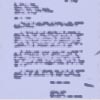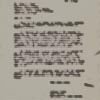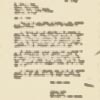The Second Continental Congress assigned a junior member from Virginia to write the first draft of a declaration of independence to explain its radical decision to "a candid world." So when Thomas Jefferson set about drafting the declaration in June, 1776, he had these purposes: to rally and unify the colonists behind the decision for independence; to make a strong legal or constitutional argument indicting King George III for oppressive acts; to lay the legal basis for seeking alliances with France and other powers.
In the years after the Declaration, the meaning of the document and the historical value of the desk on which it was written were interpreted and reinterpreted by subsequent generations in light of their contemporary circumstances.
Explore the items in this section to understand how the meaning of the desk and the Declaration have changed in American history.
Place your mouse over an individual item to get the title of the item. Click on the icon to access the item and brief annotation.














